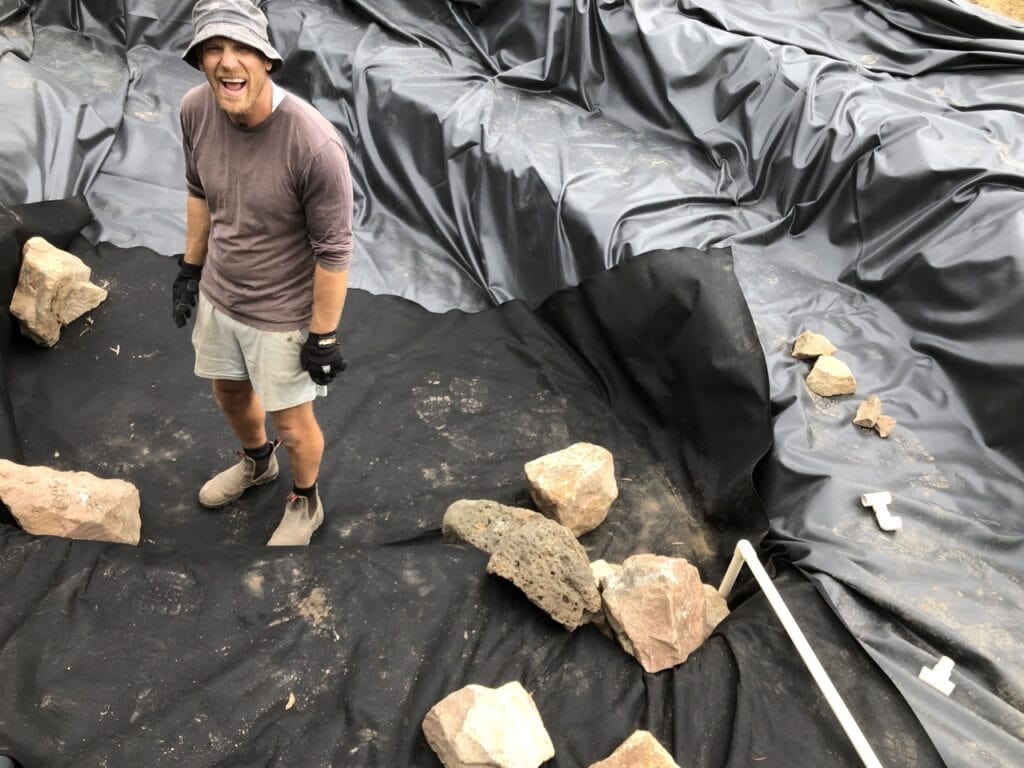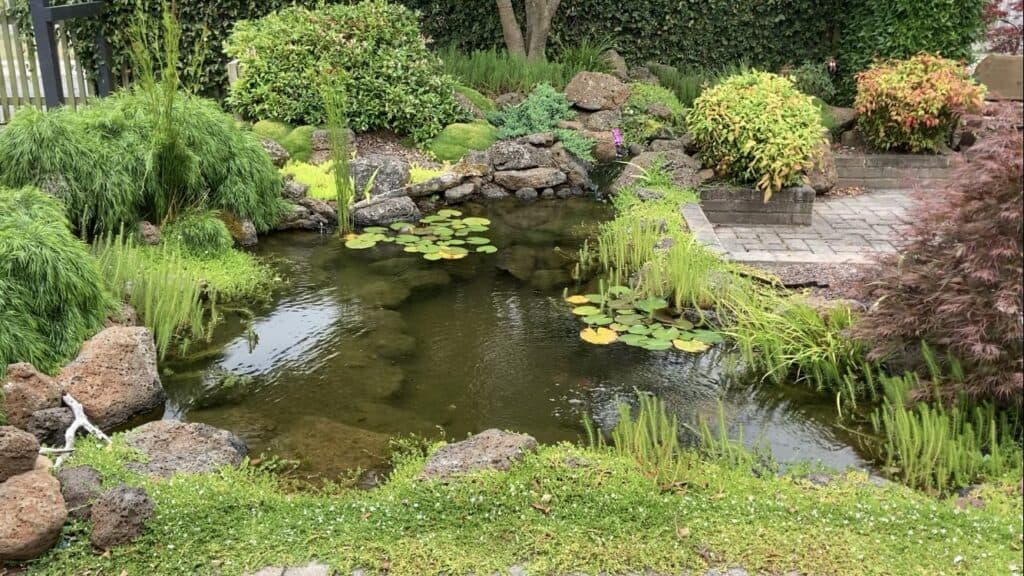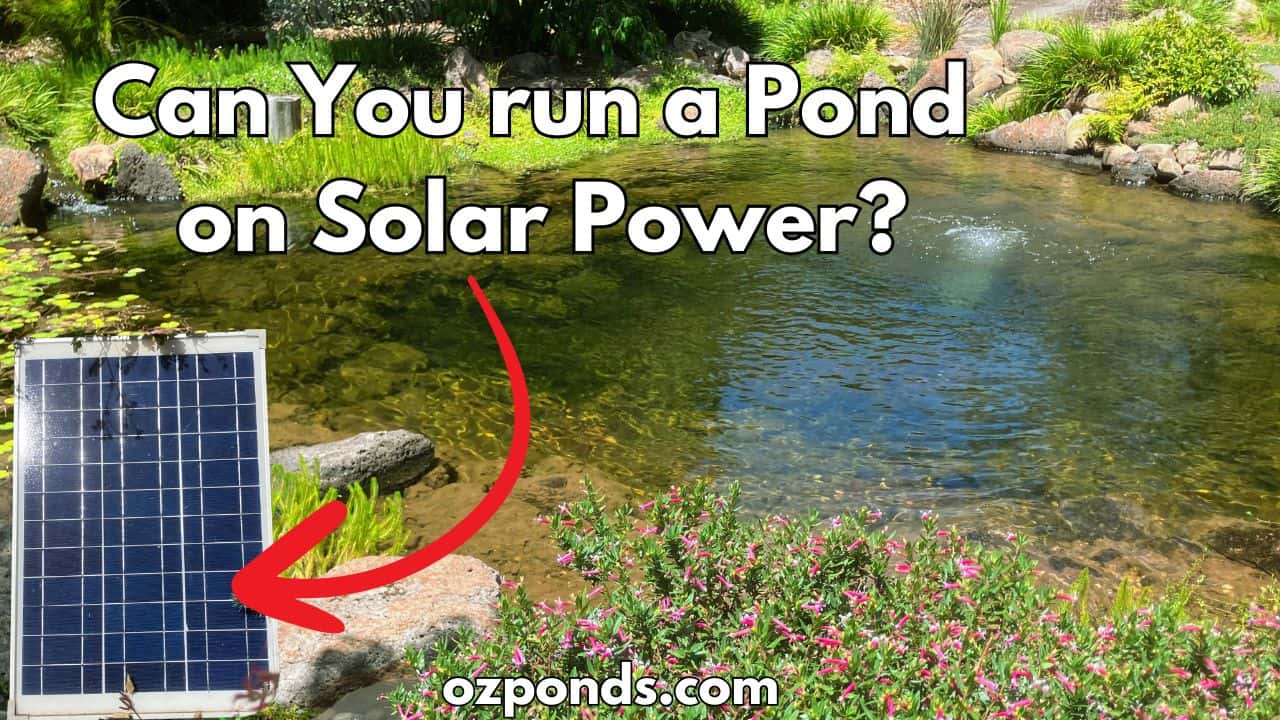Many pond owners ask whether it’s possible to run a pond filtration system using solar power. The short answer is yes, but there are several important factors to consider before making the switch.
In this post, I’ll discuss the advantages and limitations of solar-powered pond pumps, as well as how to choose the best setup for your needs.
Why Consider Solar for Your Pond?
Solar-powered pumps are appealing for a few key reasons:
- Eco-Friendly – Solar energy reduces reliance on grid power, lowering your environmental impact.
- Off-Grid Capability – Ideal for remote locations where mains power isn’t an option.
- Potential Cost Savings – Over time, solar eliminates energy costs, but the initial investment is significant.
So, while solar is often seen as “free energy,” it does require an upfront investment that can be much higher than a standard mains-powered system.
The Cost Factor: Solar vs. Low-Voltage Pumps
Before committing to solar, it’s essential to compare costs. A solar pump and panel kit will usually cost much more than a comparable mains-connected low-voltage pump.
Adding batteries for 24/7 operation increases costs even further.
A low-voltage energy-efficient pump is often a more cost-effective solution, particularly for backyard ponds where mains power is accessible. These pumps can be extended with cables—sometimes up to 25 meters (80 feet)—to reach your pond while keeping energy use minimal.
If you have access to mains power within a reasonable distance, a low-voltage pump will usually be the better option. However, if your pond is in a remote area, solar may be your only choice.
Here’s a video showing how I extend the cable on my low volt pumps:
Types of Ponds and Solar Feasibility
Before choosing a solar setup, consider the type of pond you have or plan to build. Different pond designs have different filtration needs:
1. Fish Ponds (Require Constant Filtration)
- Fish produce waste, which needs to be broken down by beneficial bacteria in a filtration system.
- Water movement and aeration are crucial to keep oxygen levels high.
- Ideally, pumps should run 24/7 to maintain water quality.
- Therefore, a solar system with batteries would be necessary to keep pumps running at night.
2. Wildlife Ponds (Low Maintenance, No Pump Needed)
- A pond with little or no fish and plenty of plants can often be self-sustaining.
- Plants naturally filter the water by absorbing nutrients and providing oxygen.
- Solar pumps or aerators can still be useful but are not essential.
3. Hybrid Ponds (Combining Filtration and Plants)
- A mix of water movement, filtration, and plant-based purification can work well.
- A solar pump that runs during the day, combined with a battery backup or an air pump, can help maintain water quality.
Here’s a look at a solar system I created for a small hybrid pond:
Choosing a Solar Pump System
If solar is your only option, here’s what to consider when selecting a system:
- Pump Flow Rate – Determine how many litres per hour (LPH) your pond requires and how much energy the pump will consume per hour.
- Solar Panel Size – Larger panels collect more energy and improve pump performance on cloudy days.
- Battery Backup – If you want your pump to run at night or during extended cloudy periods, you’ll need batteries, which increase the cost.
- Energy Efficiency – Not all pumps are created equal. Look for high-efficiency models to maximize performance while minimizing power requirements.
Example: Solar Pond with a Stream
I have a small solar-powered pond and stream system that runs 8 to 12 hours a day, depending on the season. It features:
- A DIY filter to help maintain water clarity.
- A solar pump with a battery backup.
- Shrimp and tadpoles instead of fish, which reduces filtration needs.
- A design that prevents water loss when the pump stops.
This system is effective, but it does require proper planning to ensure reliable performance.
Here’s all the videos showing the different aspects of that build:
Comparing Solar and Low-Voltage Pumps
A plug-and-play solar pond pump kit, like the PondMax 3,500 LPH system, costs around $500. In contrast, a comparable low-voltage pump costs about $150, though you’ll need to factor in electricity costs.
While solar saves money on electricity, it is less reliable on cloudy days and costs more upfront. If your priority is long-term savings and sustainability, investing in a larger solar system with battery storage might be worth it.
Final Thoughts: Is Solar Right for You?
If you need to go off-grid, follow these steps:
- Determine your pond type (fish pond, wildlife pond, or hybrid).
- Decide if your filtration system needs to run 24/7.
- Calculate your required flow rate.
- Choose the most energy-efficient pump for your needs.
- Work with a local solar expert to size your system correctly, based on seasonal sunlight availability.
For most backyard ponds with mains access, a low-voltage pump is the more practical and cost-effective choice. But if you’re set on solar, ensure you have a well-designed system that meets your needs year-round.
Resources to Help You Build a DIY Pond

Blueprint I use to build my ponds
- All the numbers I use to design my ponds, delivered straight to your inbox
- These formulas have helped people all over the world build beautiful, low maintenance ponds, without spending a fortune.
- Access to a private community of like minded people and a chat bot that loves answering pond related questions.

Join my free email list
If you would like to join my free email list click the button below.
I promise I won’t spam you, I’ll only send information I think can help you save money building and maintaining a pond.

